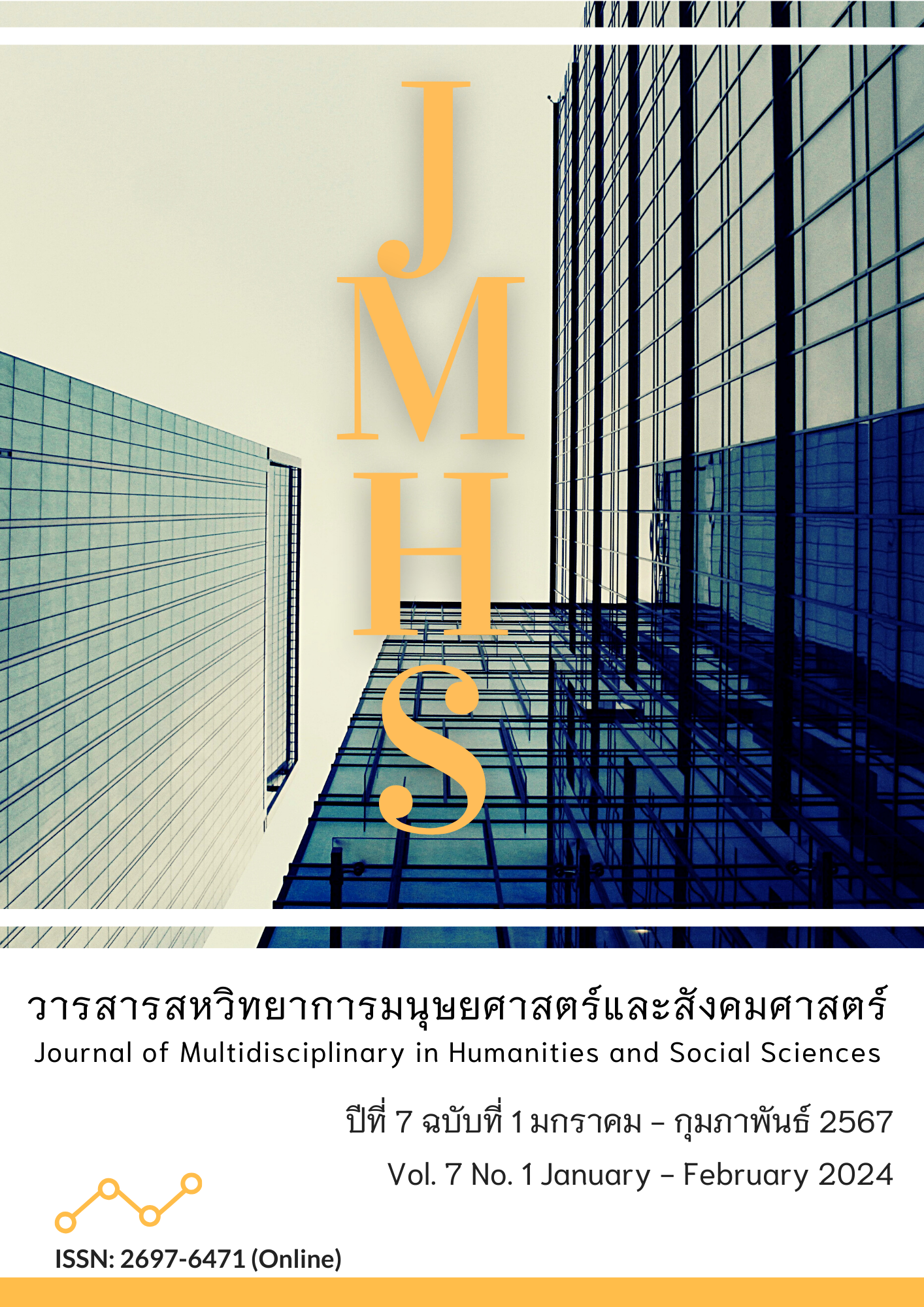Delivery Industrial Food of Standard Pricing on Application Online
Main Article Content
Abstract
This article aimed to (1) identify factors influencing the pricing of the food industry on applications online; (2) find the impact of these factors on delivery food pricing; and (3) find the pricing of food delivery on an online application affected by these factors. The methodology involved the data collection of six food delivery applications, selecting a sample from 6 apps. The food delivery service of 100 first food shops per application within 3-4 menu foods had the highest score of orders, totaling 2,017 samplings to be found around Prachuapkhirikhan province. The research employed statistical analysis, specifically multiple regression equations, to determine hedonic pricing in the food industry. The research results were as follows:
1) Factors affecting food delivery prices through online applications. Structural characteristics such as food type, quantity, order, star ratings, and the addition of seasonings affect food pricing. The accessibility characteristics of food delivery were assessed, including free shipping when buy one, get one free, buy one, get two free, buy 200 baht to discount food, more free promotions for more products, and types of applications used to order food and delivery prices.
2) The level of factors that affect the price of food delivery via online applications are satisfaction with the price of food delivery via online application, the price of food delivery, and the free promotion plus additional food.
3) Food delivery prices via online applications were classified by type of cooking, food origins, and the online delivery platform used, influenced by environmental aspects, accessibility, and food attributes.
The implementation of this research was to obtain complete information on delivery food pricing. Based on the distinct app's accessories and the food’s cuisine, incomplete food ordering information (asymmetry information) causes food delivery prices to fluctuate and be uncertain.
Article Details

This work is licensed under a Creative Commons Attribution-NonCommercial-NoDerivatives 4.0 International License.
Views and opinions appearing in the Journal it is the responsibility of the author of the article, and does not constitute the view and responsibility of the editorial team.
References
จุฑามาศ ศรีรัตนา. (2561). พฤติกรรมการเลือกใช้บริการผ่านแอปพลิเคชันสั่งอาหารออนไลน์ของผู้บริโภค ในช่วงการระบาดของไวรัสโควิด-19. วารสารเครือข่ายส่งเสริมการวิจัยทาง มนุษยศาสตร์และสังคมศาสตร์, 4(3), 118-128. สืบค้นจาก https://so06.tci-thaijo.org/index.php/hsrnj/article/download/253657/171620/917655.
ธานินทร์ ศิลป์จารุ. (2563). การวิจัยและวิเคราะห์ข้อมูลทางสถิติด้วย SPSS และ AMOS. กรุงเทพฯ: บิสซิเนสอาร์แอนด์ดี.
ศูนย์วิจัยกสิกรไทย. (2566, 5 มกราคม). ทิศทาง Food Delivery ปี 66? หลังผู้บริโภคกลับมาใช้ชีวิตปกติ. สืบค้นเมื่อ 9 มกราคม 2566, จาก https://www.kasikornresearch.com/th/analysis/k-social-media/Pages/FoodDelivery-FB-05-01-2023.aspx
อำพล นววงศ์เสถียร. (2557). พฤติกรรมการตัดสินใจของผู้บริโภคในร้านค้าออนไลน์ในกรุงเทพมหานคร. วารสารปัญญาภิวัฒน์, 5(2), 134-149. สืบค้นจาก https://so05.tci-thaijo.org/index.php/pimjournal/article/view/20161
Andersson, D. E. (2010). Hotel Attributes and Hedonic Prices: An Analysis of Internet-Based Transactions in Singapore’s Market for Hotel Rooms. The Annals of Regional Science, 44(2), 229-240. Retrieved from https://link.springer.com/article/10.1007/s00168-008-0265-4
Arunuphookin, N., & Kosakarika, S. (2023). A Study of Attitudes and Consumer Behavior Influencing Process of Food Purchase via Application in Bangkok. Journal of Humanities and Social Science, 9(1), 313-326. Retrieved from https://so03.tci-thaijo.org/index.php/rpu/issue/view/17442
Barzel, Y. (1997). Economic Analysis of Property Rights. Cambridge: Cambridge University Press.
Hew, J. J., Lee, V. H., Ooi, K. B., & Wei, J. (2015). What Catalyses Mobile Apps Usage Intention: An Empirical Analysis. Industrial Management & Data Systems, 115(7), 1269-1291. https://doi.org/10.1108/IMDS-01-2015-0028
Jiradilok, P., Aujirapongpan, S., & Raksayot, N. (2021). Motivation and Purchasing Behavior of Community Products of Consumers in the Online Market. Case Study: Krajood Wicker Products. Journal of International Studies, Prince of Songkla University, 11(2), 249–279. Retrieved from https://so03.tci-thaijo.org/index.php/jis/article/view/244664
Puangmaha, L. (2023). Model of Customer Experience Management in Food Delivery Businesses. Journal of Public Relations and Advertising, 16(1), 1-21. Retrieved from https://so03.tci-thaijo.org/index.php/jprad/article/view/263386
Pukpungsakorn, K., Somvipat, W., Keitpiriya, S., Ratanachai, N., & Praditthum, C. (2021). Factors Affecting Consumers in Making Decisions in Using Online Food Delivery Services in the New Normal Period. Humanities and Social Sciences Nakhon Sawan Rajabhat University Academic Journal, 8(2) 73-87. Retrieved from https://so05.tci-thaijo.org/index.php/hssnsru/issue/view/17121
Stanley, L. R. Tschirhart, J. T., & Anderson, J. (1991). A Hedonic price analysis of nutritionally Labeled breakfast cereals: Implications for nutrient labeling. Journal of Nutrition Education, 23(5), 231-238. https://doi.org/10.1016/S0022-3182(12)81253-2
Wem, H, Pookulangara, S., & Josiam, B.M. (2022). A comprehensive examination of consumers’ intentions to use food delivery apps. British Food Journal, 124(5) 1737-1754. https://doi.org/10.1108/BFJ-06-2021-0655.
Zanetta, L. D., Hakim, M. P., Gastaldi, G. B., Seabra, L., Rolim, P. M., Nascimento, L. G. P., Medeiros C. O., & Cunha, D. T. (2021). The Use of Food Delivery Apps During the COVID-19 Pandemic in Brazil: The Role of Solidarity, Perceived Risk, and Regional Aspects. Food Research International, 149(1), 110671. https://doi.org/10.1016/j.foodres.2021.110671


